Maximizing our “big gulp”
March 6, 2014
Here’s a factoid for those who think last week’s storms are water under the bridge now: Thanks to Los Angeles County’s flood control system, about $18 million worth of that rain is in the bank.
Los Angeles County Public Works Director Gail Farber reported this week that the county’s flood control infrastructure—sprawling, complex and generally taken for granted by Southern Californians—managed to collect and store some 18,000 acre-feet of rainfall by the time the skies cleared.
That’s enough water to supply 144,000 people for a year—roughly the population of Pasadena. Or, for Westsiders, a year’s worth of hydration for everyone in Santa Monica, the Pacific Palisades, Topanga Canyon and Malibu combined.
At about $1,000 per acre-foot for imported water, that’s good news, Farber told the Board of Supervisors on Tuesday. But in the midst of this drought, even more of that precious precipitation could have been saved had county dams not been clogged with dirt, sand and gravel from prior storms.
Instead, Farber said, water at Santa Anita Dam and Devil’s Gate Dam was released to maintain a safe capacity and prevent flooding.
“Had we more capacity behind our dams,” says Farber, “we could have captured more rain than we did.”
The storms dumped nearly a foot of rain last week on parts of Los Angeles County, raising water levels by as much as 36 feet at some of the county’s 14 dams. Though eagerly anticipated in this water-starved year, the rain also brought the threat of mudslides in foothill neighborhoods where brushfires have hit hard in recent months.
County workers had been out in force, working with surrounding municipalities and first responders to buttress vulnerable streets and help homeowners get ready, and were on hand round-the-clock as the storms hit.
Farber said the Department of Public Works alone “had more than 325 employees out there day and night, working 12-hour shifts in the pitch black with mud and debris flowing, and the rain coming down, and snow in the mountains, and hail sometimes.”
For all of that, the downpours scarcely made a dent in the three-year drought that has been withering the region, says Deputy DPW Director Massood Eftekhari.
“We’ve only accumulated 22 percent of what we normally accumulate, compared to prior years,” Eftekhari says. “We still have to conserve and collaborate to capture and utilize every drop we get.”
To that end, Public Works officials have been focused on maximizing the system’s capacity to better store rainwater when future storms hit. The county’s dams are set up not just to prevent rains from inundating neighborhoods in the flats and foothills, but also to collect storm water. That water later is released gradually onto massive spreading grounds where it percolates into the underground aquifers that supply about a third of L.A. County’s drinking water.
But each accumulation of rain also brings an accumulation of sediment and runoff. That sediment—hundreds of thousands of cubic yards of gunk in a typical year, enough to fill the Rose Bowl several times over—settles in dams and debris basins, and takes up space that otherwise would hold valuable rainfall.
Typically, that gunk gets trucked out over time by Public Works crews who dispose of it in designated “placement sites”, landfills and rock quarries—an epic task that, until recently, followed a time-honored schedule. After the historic 2009 Station Fire, however, so many tons of charred debris washed into the system that the county’s entire sediment management plan had to be recalculated, says Farber.
Now, she says, at least four county dams—Devil’s Gate, Big Tujunga, Pacoima and Cogswell—have been put on an accelerated sediment removal schedule. Devil’s Gate, which is near Pasadena, is first in line, with an environmental impact report already underway, and Pacoima will be soon to follow.
That intensified need to make room in the system has drawn some fire from neighborhoods near some of the dam sites. Though they have the most to lose should the clogged dams overflow, they also stand to suffer the greatest inconvenience from the truck traffic inherent in removing millions of cubic yards of muck.
As communities around the dams measure their risk against the potential for upheaval, the officials noted that the county will be working with state and federal agencies to come up with efficient ways to capture more storm water and prepare for future storms.
Meanwhile, they remind, this is no time to let our guard down.
“This was a good-sized gulp, but the drought still is not over,” Eftekhari says.
Posted 3/6/14
Get there, or steer clear
March 6, 2014
Whether you want to get to the L.A. Marathon on Sunday or stay as far away from it as possible, we’ve got you covered.
For those who want to cheer on the thundering pack of more than 25,000 runners, here is the course map. Getting there via public transportation might be a good idea. But be aware: there are lots of bus detours in the works and Metro has the list here.
Finally, if you’d just as soon avoid the whole thing, check out the Los Angeles Department of Transportation’s list of street closures and estimated reopening times here. The DOT also reminds people to respect those temporary no-parking signs along the route. If the worst happens, they also have information on how to reclaim your towed car.
Posted 3/6/14
Good news for Bowl bottoms
March 5, 2014
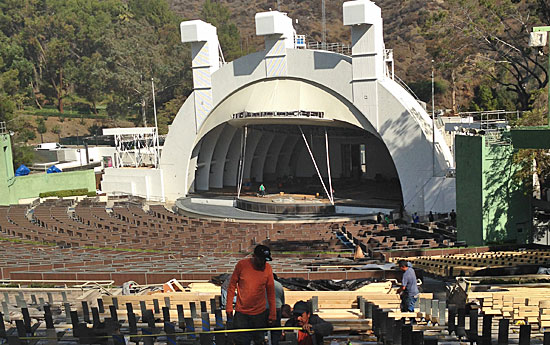
Alaskan yellow cedar benches are going in at the Bowl, replacing old ones that have seated millions.
Consider the lot of the lowly Hollywood Bowl benches.
Every summer, they bear silent witness to sublime symphonies, cool jazz and the musical stylings of some of the biggest names in pop. They brave the elements year ‘round, and when the amphitheatre is in full swing, get up close and personal with some 14,000 rear ends a night (some shielded with cushions, others not so much.)
Is it any wonder that eventually even the staunchest Bowl bench starts to crack under all the pressure?
But relief is on the way for the current crop of benches, which were installed at the dawn of the Reagan Administration and have hosted more than 18 million backsides in their time.
Mark Ladd, the Bowl’s assistant director of operations, calls the bench replacement “a once-in-a-career project.”
“It’s exciting to see it get done,” Ladd said. “If you take a look at some of the older wood, you’ll see it’s overdue.”
Underwritten by Prop. A park improvement dollars and other funds made available by Los Angeles County Supervisor Zev Yaroslavsky, the $1.6 million project is expected to wrap up in time for this year’s opening night on June 21. (Concertgoers for this year’s pre-season lease events like Black Sabbath, Billy Joel and Bruno Mars and Pharrell Williams will see a work in progress, with a mix of old and new benches available for seating.)
Beyond putting to rest the occasional splinter complaint, the new seats—which, like the earlier benches, are made of golden-hued Alaskan yellow cedar which will weather in time to a silvery gray—will be visually striking in their inaugural season.
And they’ll be widely used. While some music fans pony up for pricey box seats, the vast majority of Bowl patrons flock to the benches, where some weeknight concert tickets can be had for little as $1. (Another buck rents you a cushion for the night. For more on that and other tips for making the most of your Bowl experience, click here.)
The bench replacement project is part of a long list of improvements that have gone into the county-owned facility in recent years, including replacement of the legendary shell itself. New restrooms, park furniture to make it easier for more people to picnic at the site, “speed ramps” to whisk patrons to the Bowl’s upper levels, LED screens, a wine bar and a state-of-the-art sound system are among the upgrades in the just the past few seasons. (Industry professionals seem to be noticing; the Bowl recently nabbed its 10th straight Pollstar award as the nation’s best major outdoor concert venue.)
In addition to the new benches, this summer season will also be illuminated with new landscape lighting around the site, also funded by Yaroslavsky’s office. And the Los Angeles Philharmonic, which operates the Bowl under a lease agreement with the county, is replacing the stage floor, a maintenance procedure it undertakes every 10 years or so.
As construction workers buzzed around the site this week, assistant operations director Ladd noted that those venerable Bowl benches, installed back in 1981, may still not have reached the end of their long service to the people of Los Angeles County.
“We’re looking to re-use as much as we can,” Ladd said, pointing out that the wood can be re-milled and made available for repairs and future construction projects throughout the county parks system—an environmentally-friendly encore worthy of the Bowl itself.
Posted 3/5/14
The people’s art
February 27, 2014
From a rammed earth sculpture in the high desert to glimmering bronze leaves channeling the olive groves of yesteryear, the county’s civic art collection is as diverse as Los Angeles County itself.
And it’s growing fast.
In just the past four years, the program has added 58 new artworks and restorations to its collection. The new works join a vibrant array of earlier projects commissioned and managed by the Los Angeles County Arts Commission as part of the Civic Art Program, which requires that 1% of the design and construction costs on new county capital projects be set aside for art.
Since the Board of Supervisors approved the program in December, 2004, a total of 80 projects have been completed at L.A. County facilities. And more are on the way, including the first $1 million civic art endeavor, at the Martin Luther King, Jr. Medical Campus, as well as projects at the renovated Hall of Justice and the new San Fernando Valley Family Support Center.
Margaret Bruning, who directs the program, said the aim is to “create artworks and facilities that reflect who we are as a community and a culture, where we are now—and where we think we’re going.”
“We often say that civic art is about the art of the place…But it’s more than just art in the pure sense,” she said. “It’s about people and their experience of this place and of each other. And I think that’s the civic-mindedness that comes through in civic art.”
As the program’s 10th anniversary approaches, take a spin through the photo gallery below to appreciate some of the compelling, beautiful or just plain fun artwork that has been integrated into county facilities—from swimming pools and skate parks to libraries and fire stations—over the past decade.
Posted 2/26/14
Here comes the rain
February 26, 2014
The good news is that the rain has finally arrived.
Unfortunately, in some parts of Southern California, that threatens to be the bad news too.
Parched by drought and charred by wildfires, Los Angeles County has spent the week both cheering and dreading the Pacific storm systems that are predicted to soak California—and perhaps Sunday’s Academy Awards—with the wettest weather L.A. has seen since 2012.
“On one hand, the region is in sore need of drought relief, so we’re happy to have it,” says Kerjon Lee, county Department of Public Works spokesman. “But the hillsides around the Colby Fire, the Madison Fire, the Powerhouse Fire, even the Station Fire—those areas haven’t recovered.
“The hills no longer have vegetation or trees or shrubs to prevent erosion. And the upper crust of the soil has been scorched, so it’s less absorbent. Water runs across it as if it had a wax surface.”
In other words, don’t just grab an umbrella, L.A. County. Get ready for mudslides, too.
At the Department of Public Works, the situation is all-hands and the mission is twofold—first, to make sure in this drought that every possible drop of rainfall is captured, and, second, to protect local homeowners and businesses from a potential onslaught of coursing storm water and debris.
“We try not to be alarmist, but the threat right below the burn area of the Colby Fire in the foothills above Glendora is pretty serious,” Lee says.
To that end, he says, the department has been partnering not just with Glendora but with cities throughout the foothill burn areas of the San Gabriel Valley. So far, DPW engineers have advised some 700 county homeowners and businesses on ways to protect their property in the event of rain.
Public Works crews also have been working since last year with state and local agencies, the U.S. Geological Survey and others to assess risk, clean out debris basins and install crib dam structures at strategic locations in burn sites.
Drought notwithstanding, the storm preparations have been intensive. In the area of last May’s Powerhouse Fire alone, for instance, the county has installed nearly a mile’s worth of concrete barricades, or k-rail, along Walkatop, Munz Ranch, San Francisquito Canyon and Elizabeth Lake roads, plus metal standpipes at more than a dozen locations and more than 2,100 feet of embankment protection, all during the last eight months.
That’s not counting the routine storm preparations the department does every year in the county’s massive flood control system, which includes 14 major dams, 487 miles of open channels and 2,919 miles of storm drains. Or the prep work done by Los Angeles city sanitation crews, whose jobs have included clearing the catch basins near Hollywood’s Dolby Theatre, where the red carpet for Sunday’s Oscars is already out (and covered in rainproof plastic).
Nor does it include longer-term projects like La Canada’s Mullally debris basin, which was expanded in late 2010 after winter storms the prior year clogged its drainage system. (Debris from the 2009 Station Fire had been brought down by the rainstorms, and the backup had inundated nearby homeowners with a wall of mud.)
While DPW crews try to prevent storm water from inundating local roadways, county “storm boss” Michele Chimienti , who heads dam operations for the department’s water resources branch, will be trying to save as much of it as possible.
This week’s storms, heavy as they may end up being, won’t reverse the drought that has dogged California for the past three years; in fact, the overall lack of precipitation has been such a concern that this week, the Board of Supervisors extended the county’s lease on its two Super Scooper fire-fighting aircraft.
But one function of the county dams is to gather water that can be released periodically to replenish the underground aquifers that, in turn, generate about a third of the region’s drinking water.
Right now, Lee says, most of those dams are at less than 5% capacity, so there’s plenty of room for more.
While the county battens down the hatches of its infrastructure, homeowners can make their own storm preparations.
Appearing before the Board of Supervisors this week, Public Works Director Gail Farber reminded the public that the county’s Coordinated Agency Recovery Effort web site will be updated as the storm progresses with information on road conditions, flooding, forecasts, emergency contacts, disaster preparedness and assistance programs. (For details, click here.)
The Los Angeles County Sheriff’s Department suggests that, if you haven’t already, you should sign up for free public safety alerts from the department via Nixle. They also are offering tips on storm-proofing your vehicle—and your driving habits.
DPW also has this handy list of places to obtain free sandbags and this free guide to flash flood preparedness. For homeowners interested in rain barrels, the City of Los Angeles offers this guide to rainwater harvesting.
And one more bit of advice from the experts: Don’t forget to turn off your sprinklers. With any luck, the upside of this storm will carry over onto your water bill.
Posted 2/26/14
Dial M for Metro WiFi
February 25, 2014
Hold the phone: after years of study, a project to bring WiFi and cellular service to L.A.’s subway system is now underway.
The project is on track for completion by January, 2016. But Daniel Lindstrom, Metro’s manager of wayside communications, said that work will likely take place in stages, with segments of the system—such as stations in the downtown L.A. business district—potentially coming on line earlier.
Work began in January. For now, they’re dealing with what Lindstrom calls the “techie stuff,” like where to locate a 2,000-square-foot “base station hotel” that will house equipment for cell phone providers that join the Metro network.
The company chosen to develop and operate Metro’s system, InSite Wireless, has already brought WiFi and cell service to Boston’s decades-old subway system, known as “The T.”
“If you can implement it in a 100-year-old subway, you can definitely implement it on a modern system like ours,” Lindstrom said.
Lindstrom said he could not estimate how many people will use the service when it is up and running in Los Angeles, but noted that there is particularly strong demand among younger passengers, whereas older riders tend to have more of a take-it-or-leave-it attitude.
“If you’re in your 20s, like my kids, they say, ‘Why don’t you have cell phone coverage in the subway? What’s wrong with you?’ ” Lindstrom said. “I’m just about to hit 50, and I think it’s nice to have but I don’t necessarily expect it. And if you’re in your 80s, you say, ‘Just forget about it.’ ”
Riders of the Red and Purple subway lines won’t be the only beneficiaries of the new service; it will also cover below-grade portions of the Blue, Gold and Expo lines, along with the future Crenshaw Line.
Lindstrom said that people with data plans through their individual cell phone service will be able to use their devices on Metro free of charge. Those who don’t have such plans will pay as they go when they sign into the network on a platform or in a subway car, much as they currently do on airplanes—or in other underground systems around the world.
“London makes you pay $3 a day,” Lindstrom said.
Lindstrom said Metro is hoping to offer an early taste of what the system will offer by having Union Station’s WiFi up and running by its 75th anniversary later this year.
When the whole system is online, Metro will receive at least $360,000 a year from the program, and its share of revenue from InSite could potentially be far greater. A report last year to the agency’s Executive Management Committee said that Bay Area Rapid Transit in northern California reported $2 million a year in new revenue after it installed cell and data service.
The service also will enhance security by enabling passengers to call for help if needed. And, Lindstrom said, it will allow sheriff’s deputies and security officers to view and respond to real-time video feeds.
“It’s a force multiplier,” Lindstrom said. “It will allow deputies to see things as they are going on.”
Posted 2/21/14
Metro’s bicycle brain trust
February 25, 2014
There was once a time, not long ago, when bicyclists weren’t much more than a squeaky wheel to Metro—and not in a good way.
What a difference four years makes.
On February 19, 2010, the cycling community got a seat at the transit table when Metro hosted its first Bicycle Roundtable meeting.
It was the beginning of an important collaboration—one that would lead to some major improvements for cyclists within the Metro system. But you wouldn’t have known it from the rocky start of the process, as cyclists started engaging warily with a government agency that hadn’t always been so welcoming.
“They distrusted us and were very assertive about issues we needed to address and policies we needed to embrace,” said Diego Cardoso, Metro’s executive officer in charge of the bicycle and pedestrian program. “Those were the days when Metro was transitioning as an agency in terms of mobility and bicycling in L.A. County.”
Intended as a forum for bike advocates to exchange ideas with the transit agency, the meetings grew out of a rising tide of vocal cycling activism. “The bicycle community was demanding in terms of getting Metro, cities and the county to deal with issues of how to improve mobility for bicycles,” Cardoso said. “We said ‘Well, let’s bring them together.’ ”
Though contentious at first, the discussions soon evolved in ways that have helped shape the emergence of cycling as a major mode of transportation in the county.
One of the earliest results was the end of a ban that kept bikes off trains during peak periods of travel. What’s more, the agency has even removed seats from rail cars to clear more room for cyclists to bring their rides aboard. And Metro has more than doubled the share that bicycles get in its competitive Call for Projects program, which funds local initiatives with regional significance. (Cycling programs now get 15% of the pot, which in the last cycle totaled $199.4 million.)
The collaboration also has led to new public education programs promoting safety. The highly visible “Every Lane is a Bike Lane” campaign grew out of roundtable discussions, and last summer, Metro launched bicycle safety classes taught by advocacy groups that attend the meetings.
On the political side of things, Metro’s Board of Directors has provided support as well, officially recognizing bicycling as an official “mode of transportation,” putting it on equal footing with motorized travel.
Next up: bike-sharing.
“Bike share is a good example where they basically asked ‘What do you think?’” said Eric Bruins, director of policy and planning for the L.A. County Bicycle Coalition. “Feedback from the roundtable was very clear—there should be one regional vendor and we want to see a strong leadership role from Metro.”
The agency, spurred by a motion by Mayor Eric Garcetti, Supervisor Zev Yaroslavsky and others, stepped in after the city of L.A.’s bike share program foundered and took the lead in creating a county-wide bike sharing plan. In December, Metro’s board expanded the agency’s role, directing it to fund the plan by teaming up with local jurisdictions.
An update on the bike share project’s progress—including input from the roundtable group—is scheduled to come before Metro’s board in April. According to Cardoso, the agency is in the process of contracting with an outside company to help implement the program, with Los Angeles, Santa Monica and Pasadena serving as pilot cities.
Another upcoming project aims to build five new “bike hubs,” structures that will offer secure parking, repairs and other resources, at major public transportation hotspots. The first one, at El Monte Station, will open later this year. Other hubs are planned for Union Station, Culver City Expo Line Station and two Red Line stations—Hollywood/Vine and North Hollywood.
The roundtable’s most recent meeting earlier this month drew a mix of cycling aficionados, staff from government agencies and the offices of elected officials and even a couple of unaffiliated members of the public. Attendees came from all over: Santa Monica, Montebello, even Orange County.
One regular participant, Dennis Hindman, 61, of Toluca Lake, said he’d like to see more folks from the public take part in helping the agency get more of a grassroots perspective. “It gives you the insight of actual experience,” he said. “You may have missed something from a practical standpoint that just won’t work in real life.”
Miguel Ramos, a volunteer for Multicultural Communities for Mobility, was attending for the first time. Ramos’ mission is to promote inclusion of all of the region’s diverse communities in bicycle projects—something he said is simply “not happening in low income communities” nationwide.
“These communities already have a growing bicycle culture,” Ramos said. “It’s about recognizing that fact and allowing their voices to be heard.” To achieve that, he said, Metro must increase outreach in multiple languages.
For his part, Bruins of the Bicycle Coalition said he would like to see a higher level of participation by a broader range of Metro staffers.
“Metro has many departments,” Bruins said. “We’d like to see other departments come to the bike roundtable because it’s really that exchange of ideas that’s helpful. The folks that are designing the next set of light rail vehicles came and presented designs of how bikes can be stored on board. Those are great discussions because they allow departments that don’t usually deal with the bike community to interface with us.”
Even today, bicyclists and the agency don’t always see eye-to-eye. Many cyclists are pushing for the installation in rail stations of “bike channels”—deep grooves next to stairways to make it easier for bikes to get up and down. That, however, would be expensive, and retrofitting existing stations with the channels would be even costlier, said Laura Cornejo, who oversees Metro’s Active Transportation Program and has led the past two roundtable discussions.
“Advocates are pushing for Metro to do more and be a little more aggressive,” Cornejo said, “but we have to be strategic and take baby steps to get to the final destination.”
But, she added, the days of bicycles as an afterthought in L.A. are long gone.
“All the trends point to bicycling growing,” Cornejo said. “We’ve seen it on rail, where bicycle boarding has increased about 40% in just one year. I don’t see the trend reversing or slowing.”
Posted 2/25/14
The beauty is in the details
February 20, 2014
There are moments in my job—special moments—when I know I’m representing not only the interests of people today but also the needs of generations to come. One of those occasions, I’m delighted to say, came this week with a historic vote by the Board of Supervisors to protect one of our region’s most precious environmental and recreational treasures.
On Tuesday, the board approved a Local Coastal Program (LCP) for an 80-square-mile area of the Santa Monica Mountains. Years in the making, this far-reaching document—required by the state and endorsed by a broad coalition—establishes rigorous new restrictions for development in the mountains that rise along Los Angeles County’s northern edge.
Among other things, the LCP will ban construction in the most fragile habitat areas to help ensure the survival of animal and plant life, including our oak woodlands. Natural streams will be allowed to flow without alterations or barriers. Certain deadly rodent poisons will be outlawed to protect mountain lions and other vulnerable creatures. Stars in the night sky will remain visible thanks to tough rules on outdoor lighting.
What’s more, development will be prohibited on all significant ridgelines to prevent scars that would ruin this magnificent landscape and undermine the outdoor experience for hikers, equestrians and others who’ve found refuge just minutes away from our urban sprawl.
Where development is allowed, zoning will be dramatically reduced from an average of one house per acre to as low as one per 40 acres. For grading that exceeds 5,000 cubic yards, a discretionary permit will be necessary, as well as environmental and public hearings. The current threshold for such actions is 100,000 cubic yards.
The board’s passage of the Local Coastal Program, which now goes to the California Coastal Commission for certification, also represents a dramatic shift in the stewardship of the Santa Monica Mountains.
For years, in the absence of a detailed LCP, applicants for development permits have needed approval from both the county and the coastal commission. This has added needless uncertainty, delays and costs to the process. The coastal commission, for example, currently requires a full hearing for nearly every permit. Under the county’s LCP, however, an administrative permit would be issued to people who want to build such basic structures as single-family homes or room additions that comply with the plan’s development standards.
So now the rules will be clear to all, and the elected Board of Supervisors finally will have responsibility for managing a priceless resource that draws tens of thousands of visitors to its trails and vistas each year.
In fact, the LCP itself reflects the views and priorities of a wide collection of groups and individuals who have a stake in the mountains and a passion for their continuing preservation as a rural outpost for Los Angeles. Among them are the Sierra Club, Heal the Bay, the Las Virgenes Homeowners Federation and the majority of local equestrians, whose interests are specifically addressed in the LCP. I thank them all for their heartfelt participation.
I also want to thank the county’s Department of Regional Planning and my deputy Ben Saltsman. Together, they shepherded this monumental effort, demonstrating how government can, indeed, build consensus and serve the public’s lasting interests. This plan sends a very clear message: In the Santa Monica Mountains, concerns for the environment will dictate development, not the other way around.
For more on the Santa Monica Mountains and their place in L.A., check out our video below.

Posted 2/20/14
L.A. traffic’s teachable moments
February 20, 2014
If they gave college credit for navigating the massive construction project on the 405 Freeway, Los Angeles would be well into its post-graduate studies. And Mike Barbour would be our road-weary faculty advisor.
As for big tests, well, the latest one came last weekend in the form of the 80-hour potential tie-up known as Jamzilla—and Barbour thinks we aced it.
“The public listens, I think that’s obvious,” said Barbour, whose actual job is managing the freeway improvements project for Metro. “If it would have been less than 60% traffic diversion, we would have had problems probably for the entire weekend.”
In other words, we stayed away from the construction zone in droves over the long President’s Day weekend—an outcome that wasn’t at all certain going in.
Dozens of work crews working on the northbound 405 put down thousands of tons of paving material—enough to pave a 9-mile sidewalk from Santa Monica to LAX. But only on the holiday Monday did traffic shows any signs of significant back-ups, and those were relatively short-lived and topped off at delays of about 45 minutes, Barbour estimated.
Shortly after Jamzilla was announced, Barbour acknowledged that he had his doubts about whether the driving public had become too jaded to heed the stay-away messages this time, given how smoothly everything had gone during two previous epic closures, Carmageddon and Carmageddon II.
Now, as he reflects on all three highly-publicized closures, he believes that the earlier experiences actually helped individual motorists realize how much their behavior could affect the outcome overall.
“I think they got it. They saw the benefit in the past of staying away, and this kind of carried through to this one. I don’t think we were crying wolf,” Barbour said. “People are not going, ‘Aw crap, they’re just making this stuff up.’ They’re thinking, ‘Yeah, it’s real. We’ll respond appropriately.’ ”
In fact, he believes there could be long-lasting lessons in traffic management and mass communication to grow out of the 405 Project experiences.
“This is actually kind of an amazing thing as far as dealing with traffic in L.A. Can we interact with the public on a regular basis to address these closures or impacts? Can we get them to start adjusting their habits and patterns? As things develop, can we get them to be responsive? Carmageddon and Jamzilla showed we can,” Barbour said. “And I think that’s a great thing. You could imagine what you could do with that if you could be more interactive on a regular basis with the public. Getting them to change their driving patterns and habits, that would be awesome.”
Now, with the “big milestone” of Jamzilla past and just one more potential 55-hour closure of the southbound 405 still in the works, Barbour is seeing the light at the end of the mega-project.
“Substantial completion,” meaning that people can drive the freeway and all of its improvements, including a new 10-mile northbound carpool lane, is set for this summer.
“Hopefully we’ll get it done the early part of the summer. All I can tell you is that there’s a real push. We are all just focused. Everybody’s pulling in the right direction,” Barbour said. “The sooner we get done, our lives get so much easier, and I think more importantly, the community is sick of this job. They’re sick of the impacts. That’s why we’re trying to do everything we can to minimize those right now.
“It’s been 5 years for me,” he added. “I’ve lived through thick and thin on this one.”
Posted 2/20/14




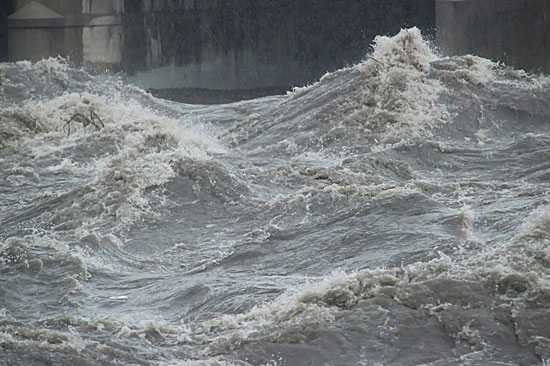
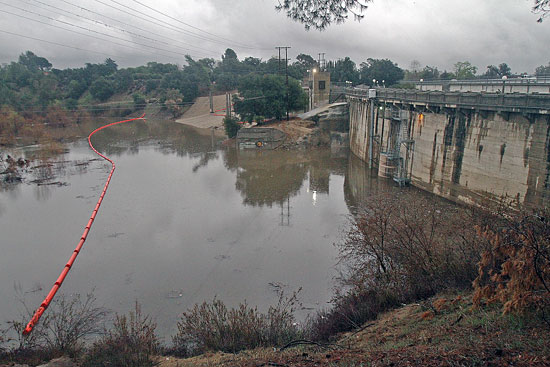

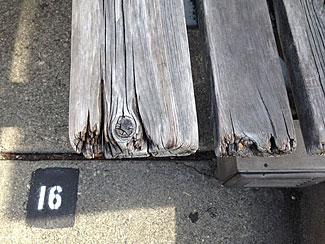
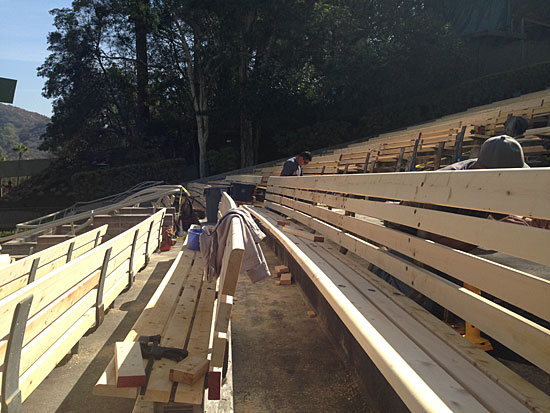
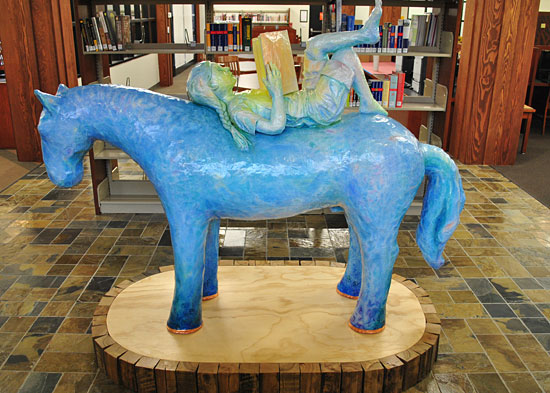






























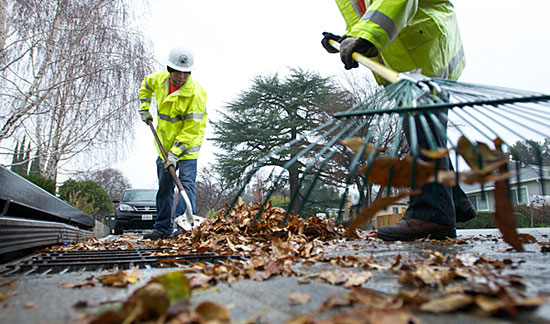
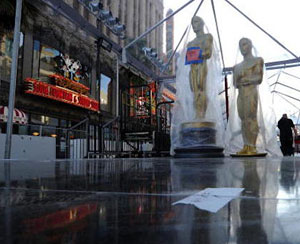
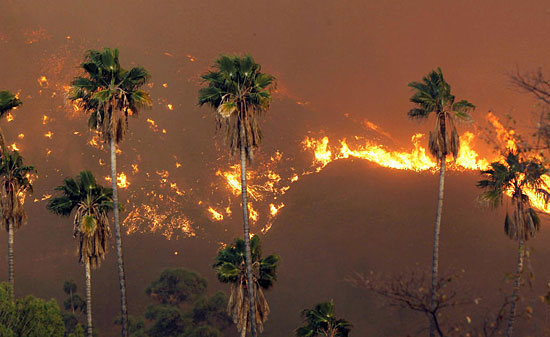
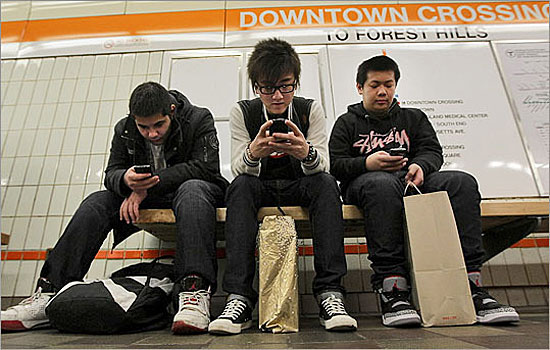


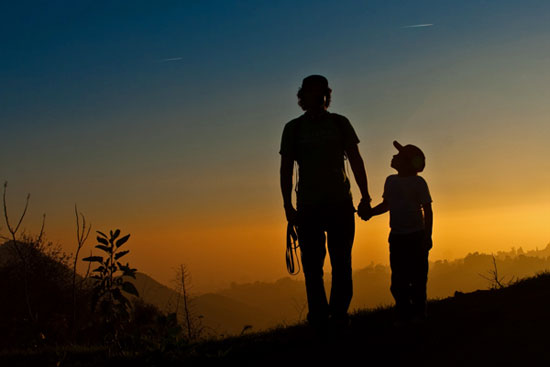
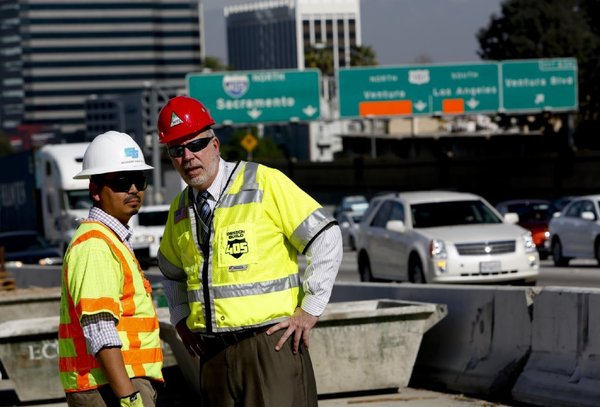
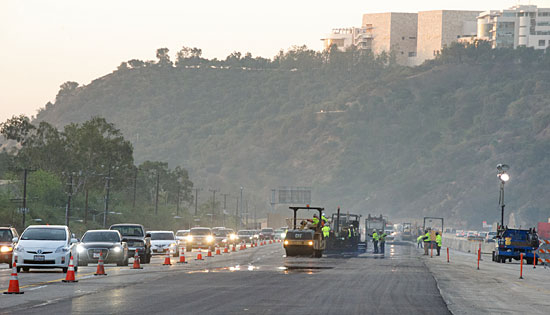





 Check for the latest closure information
Check for the latest closure information








